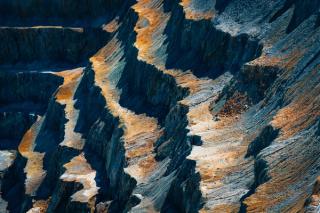
Unearthing ESG Value: Scalable solutions for mining projects from exploration to closure
by Michelle Gluck, Jim McKinley
View post

In the dynamic world of mineral exploration, effective project implementation in often challenging locations, with incomplete datasets and changing budgets, can be a real struggle. The exploration team is usually pulled in multiple different directions at once and must deal with planning, logistics, interpretation, programme modification, and budgeting.
While traditional methodologies have long served as the backbone of exploration efforts, the integration of artificial intelligence (AI) is emerging as a transformative force, promising to revolutionise how data is processed, insights are generated, and decisions are made.
The current landscape of AI adoption in mineral exploration remains patchy, with only a handful of early adopters and service providers fully embracing its capabilities. Nevertheless, the potential benefits are undeniable, offering genuine solutions to long-standing challenges faced by geoscientific teams. These challenges include navigating incomplete datasets, mitigating human bias, and effectively integrating diverse datasets, each with its own weighted importance in the exploration process.
AI tools are already reshaping traditional workflows, such as interpreting core photographs, to optimising resource drilling and identifying crucial patterns in geological data. Companies like Kobold Metals [1] (which includes investors such as Bill Gates and Jeff Bezos), Objectivity's DRX system [2], and Goldspot [3] (a subsidiary of ALS), exemplify the tangible benefits AI brings to the table. As a mineral exploration company with AI at its heart, Kobold’s discovery of the Mingomba Copper deposit in Zambia has definitely opened up the industry’s eyes to the possibilities presented by AI. Kobold’s approach uses AI to aggregate all available data, and then to identify the optimum exploration technique at each stage of the exploration process.
Objectivity's DRX system has been instrumental in major companies significantly decreasing their drilling costs without compromising drill programme objectives, showcasing the potential for cost savings and efficiency gains through AI integration. DRX essentially analyses the volume that needs to be drilled, designs an optimum drill programme to explore that volume, and assigns a value to each drillhole, so that the most important drillholes can be prioritised. Goldspot has a range of applications, with consistent logging of drill core being a real game changer, in that it increases consistency between geologists, and extracts additional value from the drill core. Goldspot uses image processing to automate logging, detect patterns in geophysical data and match anomalies to the signatures of known deposits.
The transformative power of AI lies in its ability to reduce subjectivity and analyse vast datasets beyond human capabilities. By leveraging AI, geoscientific teams can enhance efficiency and accelerate decision-making processes, thereby shortening the time taken to reach key milestones in exploration projects. This efficiency gains particular significance in light of the overwhelming data volumes generated in mineral exploration endeavours. Timely synthesis and analysis of data enable geoscientific teams to run and explore scenarios whilst leveraging their expertise effectively, without having to wait until a field season has been completed and it’s too late to react.
However, the successful integration of AI into mineral exploration workflows demands careful planning and a strategic approach. There needs to be high-level direction from an experienced exploration professional with an in-depth understanding of the mineral exploration process. That direction can be provided to individuals or a team with a blend of geoscientific knowledge and an understanding of AI. Moreover, rigorous validation against existing knowledge ensures the reliability and accuracy of AI-generated insights. As with all mineral exploration, any interpretation is simply a hypothesis that must be tested. AI-generated insights are no different in that regard.
Looking ahead, widespread adoption of AI holds the promise of refining exploration processes and optimising resource allocation. Its synergy with remote sensing technologies further amplifies its potential by analysing patterns and integrating datasets rapidly and seamlessly.
As the mineral exploration industry embarks on the journey towards AI integration, strategic planning and meticulous execution will be key to unlocking its full benefits. By embracing AI's transformative potential, exploration companies can usher in a new era of efficiency, cost-effectiveness, and ultimately, success in uncovering valuable mineral deposits.
SLR’s exploration division already utilises these tools and is incorporating AI into its services. We recently formalised a partnership with Goldspot and have already started advising our clients on how best to use AI to advance their projects. To talk to our experts, please get in touch.
------------------------------------------------------
References
[1] https://news.crunchbase.com/ai-robotics/cleantech-kobold-bill-gates-jeff-bezos-unicorn/

by Michelle Gluck, Jim McKinley

